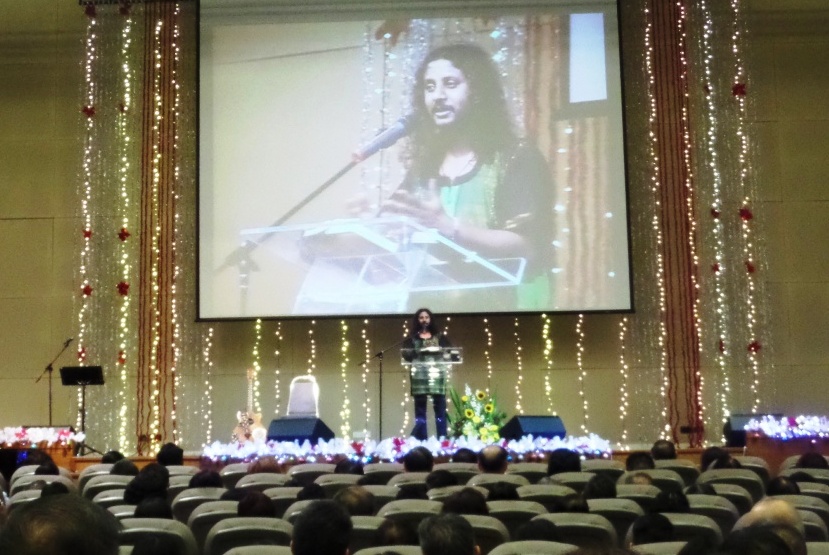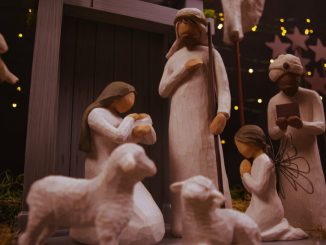
In my opinion – as I am sure in those of many others – Christmas carols are some of the most beautiful music in the world. We respond to them instinctively regardless of faith, and while as Malaysians, some of us may have never seen snow, yet they have the power to evoke the beauty of a soft winter landscape, cuddling beside a fireplace with friends and family, and an overall sense of peace and getting-together.

We may not experience these things in the same way as the Europeans but there is something emblematic and universal of what is known as the ‘Christmas spirit’. When Charles Dickens wrote his novella, ‘A Christmas Carol’, he seemed to have understood and recognized the redemptive significance of Christmas, whether intentionally or otherwise.
There is an immense variety in Christmas carols. Many are sentimental, yet the tenor range a whole spectrum of emotions, from exuberant joy (‘Joy to the World’) to serenity (‘Still, still, still), even to melancholy (‘Coventry Carol’). Many are part of our pop culture today while others date back to medieval times. Some belong emotionally to everyday people while others are more suited performed in huge cathedrals or concert halls.

This article aims to look at the stories behind some of the Christmas carols we have today. These will be necessarily short, but there is a site at http://greensleeves-hubs.hubpages.com/hub/ChristmasCarols that is highly-recommended for those who want to learn more about the subject. For myself, I have learnt much from this site. I will start off with a carol which should be familiar to readers of Christianity Malaysia, before looking into the varieties of the genre. The hyperlinks on the carol titles will take you to YouTube videos of the relevant songs.

Probably the most famous carol of all time, this Austrian hymn was composed by Franz Xaver Gruber in 1818 to lyrics by Joseph Mohr. Silent Night originated as a composition to be played on guitar, and there is an apocryphal story centering on this.
According to the story, the song was a miraculous inspiration that came in the nick of time as an answer to a dilemma. Joseph Mohr was a Roman Catholic priest and one year, on the night before Christmas, the organ in his church broke down. This was a matter of consequence as organs were crucial instruments in masses, and a solution had to be found.
On the cold Christmas Eve in 1818, Joseph Mohr walked three kilometers from his village home to visit his friend, Franz Gruber, in a neighboring town, seeking for his help. He brought with him a poem that he had composed two years ago. Moved by the beauty of the poem, Gruber agreed to help and together they composed the song in time for the Christmas Mass. In March 2011, in recognition of its legacy, the carol was declared an Intangible Cultural Heritage by UNESCO.
The Big-league
Just like any other genre, there are some carols that are in the ‘big-leagues’, purely for being more universally celebrated. Among these standouts are:

This carol had a prestigious but convoluted origin. With religious lyrics by Charles Wesley and originally secular music by Felix Mendelssohn, the song must have been a curiosity when it first came out. Charles Wesley had originally requested a slow and solemn music for his lyrics and envisioned the song being sung to the same tune as his song ‘Christ the Lord Is Risen Today’.
In 1855, the English musician William Cummings adapted music from Mendelssohn’s ‘Gutenberg Cantata’ (written as a celebration for Gutenberg’s invention of printing with movable type) to the carol. Today, there are some slight differences in arrangements for this carol depending on the church’s tradition. This song is regarded as one of the Great Four Anglican Hymns.
Unlike many other carols, this hymn celebrates the return of Christ at the end of the age, rather than His first coming. It was written by Isaac Watts based on Psalm 98 and first published in 1719. The music is said to have come from an older melody which had originated from Handel. A recent arrangement by Phil Wickham for the TV Series The Chosen has been very popular.

Adolphe Adam composed this carol to the words of the French poem ‘Minuit, chretiens’ (Midnight, Christians) by Placide Cappeau, as a celebration of the new renovation of the church organ in the town of Roquemare. This hymn has probably one of the most majestic melodies of all Christmas carols, celebrating Christ as a regal Redeemer. The song has also been recorded through the years by many notable singers including Mariah Carey, Celine Dion, Josh Groban, Whitney Houston, and Andy Williams.
Some Lesser-known Carols
Some carols are lesser-known to Malaysians though they are no less beautiful. Part of the aim of this article is to introduce new carols to readers, and in so doing, widen appreciation for them.
‘What Child Is This?’ was written by William Chatterton Dix in 1865 and had a noteworthy history. At the time he was writing the lyrics to the song, Dix was miraculously recovering from an unexpected and severe illness and depression that had left him bedridden and near-death. During this time of spiritual renewal, he read the Bible extensively and this song was written after his reading of the Gospel of Epiphany (Matthew 2:1-12) recounting the journey of the Biblical Magi. The tune to the carol came from an old English folksong, ‘Greensleeves’, which itself had a legend in connection with Henry VIII.
Veni Veni Emmanuel (O Come, O Come, Emmanuel)

This is probably one of the oldest carols that are still extant today. Derived from a set of Latin verses called the ‘O antiphons’ which were performed in monasteries around the 8th century AD, the carol is related to the exiled of Israel looking forward to the prophecy of the Messiah coming with redemption. It has probably one of the most solemn of all music among the carols, and it was the base for U2 in the composition of their song ‘White as Snow’.

Some carols celebrate the lives of heroic Christian figures. This one tells the story of a Wenceslaus I courageously braving harsh winter weather to give alms to the poor the day after Christmas. His page almost gives up the struggle against the harsh cold, but is enabled to go on, motivated by the fortitude of his king.
In Dulci Jubilo (In Sweet Rejoicing)

This one is traditionally attributed to a German mystic named Heinrich Seuse. According to folklore, Seuse heard angels sing these words and joined them in a dance of worship. The song had a great influence on music including great composers ranging from Dietrich Buxtehude, JS Bach and Franz Liszt.
Works by Great Composers Based On Carols
Great composers in Western Music have also participated many times in compositions of works based on Christmas carols. The United Kingdom has had a long tradition of this, and today choral composers like John Rutter are celebrated for their carols. Some examples of such work by great composers are:

- A Ceremony of Carols by Benjamin Britten.
- Fantasia on Christmas Carols by Ralph Vaughan Williams.
- In the Bleak Midwinter with music by Gustav Holst and lyrics by Christina Rossetti.
Though often more solemn, they are among the most beautiful of Christmas compositions.
Popular Christmas Songs
Besides carols, there are also popular Christmas Songs from mainstream culture. Though apart from the church tradition, part of the beauty in Christmas Songs is in their versatility. Some Christmas Songs are mere commercial jingles, but many others celebrate the human aspects of Christmas in their own beautiful way.

Did you know that the best-selling single of all time was a song reminiscing about an old-fashioned Christmas setting? Written by Irving Berlin, and first performed publicly by Bing Crosby on Christmas Day 1941, it expressed a deep yearning for peaceful times that would have struck a chord with soldiers on the battlefields of World War II. Today, this theme remains relevant and the song is a ubiquitous part of the Advent season for many people around the world.
Have Yourself a Merry Little Christmas

Another sentimental favourite, this song shares the same themes as White Christmas and the motif of reunion runs throughout the song. For me personally, this one had a much stronger nostalgic feel to it and the melody of the song has a potent poignancy. The song was introduced and immortalized by Judy Garland in the 1944 MGM musical Meet Me in St. Louis but it’s probably the Frank Sinatra version that is the most well-known today.
Made popular by Pentatonix in more recent times, this song was written by the American classical music composer and teacher Katherine Kennicott Davis in 1941. The Trapp Family Singers first recorded the song in 1955, and it was further popularized by the Harry Simeone Chorale in 1958.
In the lyrics the singer relates how, as a poor young boy, he was summoned by the Magi to the nativity where, without a gift for the infant Jesus, he played his drum with the Virgin Mary’s approval, remembering “I played my best for Him” and “He smiled at me.”
The purpose of this article is to encourage its readers to explore the varieties of Christmas carols beyond the ones we’re familiar with. It is my hope that the article has given a hint of the broadness and richness of this genre of music which has been part of the Christian life, and that it encourages readers to explore more on their own.
|Share The Good News|







Leave a Reply